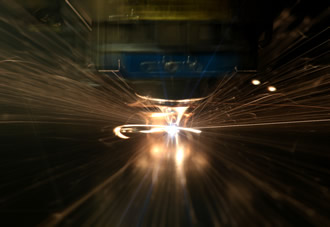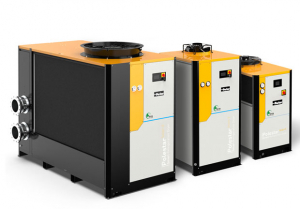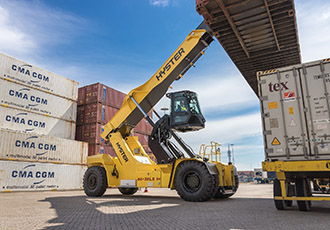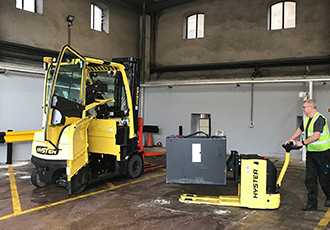Plasma vs. laser cutting

Laser technology has allowed manufacturers across the world to completely change how they work, due to its versatility when it comes to manufacturing processes. There are various laser types that have been used for different purposes and it is essential to know what each type does and how they are used in certain circumstances. This article will be looking at plasma and laser cutting.
Written by Rachel Jensen on behalf of Yorkshire Profiles.
Plasma cutting
A manufacturing type that isn’t commonly seen when compared to other processes, plasma cutting is normally used in specialist industries to cut heavier materials.
Metal is cut by using plasma melting. This involves a high velocity jet of ionised gas that achieves well over 20,000°C, making it ideal for thick materials that are normally troublesome to work with. The main thing to recognise is that plasma cutting is only used for cutting and not engraving, because the temperature makes that type of process impossible.
The benefits of plasma cutting
One of the main reasons plasma cutting is used is because it can cut a large variety of metals with ease, including aluminium and steel. It’s the main alternative option to normal laser cutting as it doesn’t struggle with the thickness of materials; plasma cutting will remain working consistently. There are some materials that are only able to be manufactured thanks to plasma machines.
Even though the heat level is considerably high, the gas used isn’t easily flammable thanks to the concentration levels used. There are few similar tools that have this level of safety. Businesses all over the world are finding this technology useful for these reasons.
Compared to laser cutting, it’s a more economical choice because plasma cutting is a less labour intensive process.
Plasma cutters are also simple to use, requiring only minimal training. Businesses with a large staff turnover find a machine that anybody can use helps them to work more effectively. In the majority of cases there are only a few bits of information that need to be inputted, including the design and required process.
Reliability is also a major advantage of plasma cutters. Not only are they durable, but replacement parts can be easily found.
The limitations of plasma cutting
It’s worth bearing in mind that the cutting nozzle needs to be replaced on a regular basis. If left unchanged, the cut quality will become poorer and in some cases will be dangerous. They aren’t cheap either.
Furthermore, plasma cutting can only treat a small range of materials. Plastics and woods are complete no-goes as they aren’t compatible with the high heat levels. A cut will either be unsuitable or the item will be completely damaged.
When it comes to safety there’s an active risk of electrocution if the correct safety precautions aren’t taken. Although the software is easy to use, it can pose a major issue for new people that may be using the machine for the first time. It’s also important to wear glasses at all times because of the radiation levels.
Laser cutting
Used in a variety of industries including carpentry, agriculture and more, laser cutting has proved popular for manufacturing. The main reason for this is how it can work with a large number of materials in a short space of time, all without sacrificing accuracy.
It works by using a high powered beam which cuts through a material. Any processes that need to be completed are done by simply inputting the data into CAD software. This guides the laser to the correct areas and directions so that the right type of cut is performed.
This technology makes it a lot easier to ensure the best accuracy. Versatility is one of the main advantages, allowing an item to be engraved without there being any effect to the material.
The benefits of laser cutting
One of the main reasons why laser cutting stands out is due to its precision, something that’s even better than plasma cutting. This allows materials that are valuable to be worked on whilst removing the concern of damage. Specially crafted cogs and tools are regularly created with this type of machine because of the high degree of accuracy.
In terms of energy consumption, laser cutting isn’t known for using a large amount when compared to other processes. The main reason for this is the CAD software making sure there isn’t any wastage.
Research is constantly being put into this type of laser, allowing the technology to catch up with plasma cutters when it comes to dealing with thicker materials.
It’s common for other similar machines to lose effectiveness over a period of time but the laser beam in this machine doesn’t have internal parts which disintegrate, resulting in a longer-lasting machine.
Another advantage of laser cutting machines is being able to work 24/7, making even the largest of demands possible.
The limitations of laser cutting
There are certain materials that will emit toxic fumes if they have any contact with the laser cutting process. This means users will need to wear specialist gear so they are protected and there needs to be good levels of ventilation. All of this added together can result in a large expense due to the extra tools needed.
There’s also production rates that are often inconsistent. It all revolves around the type of laser, what the material type is and how it will be processed. Laser cutting may use less energy than other machines but it still needs constant power. This is something that needs to be kept in mind when it comes to the energy bill.
Plasma and laser cutting
When looking at these two cutting options it’s clear that each can work well in various industries. For thick material cutting, plasma cutting is your best choice. Alternatively, if you want a more intricate cut or design done on an item that’s thinner, laser cutting is ideal.
Similar articles
More from Yorkshire Profiles Ltd
- Plasma vs. laser cutting 24th February 2015




.jpg)







Write a comment
No comments